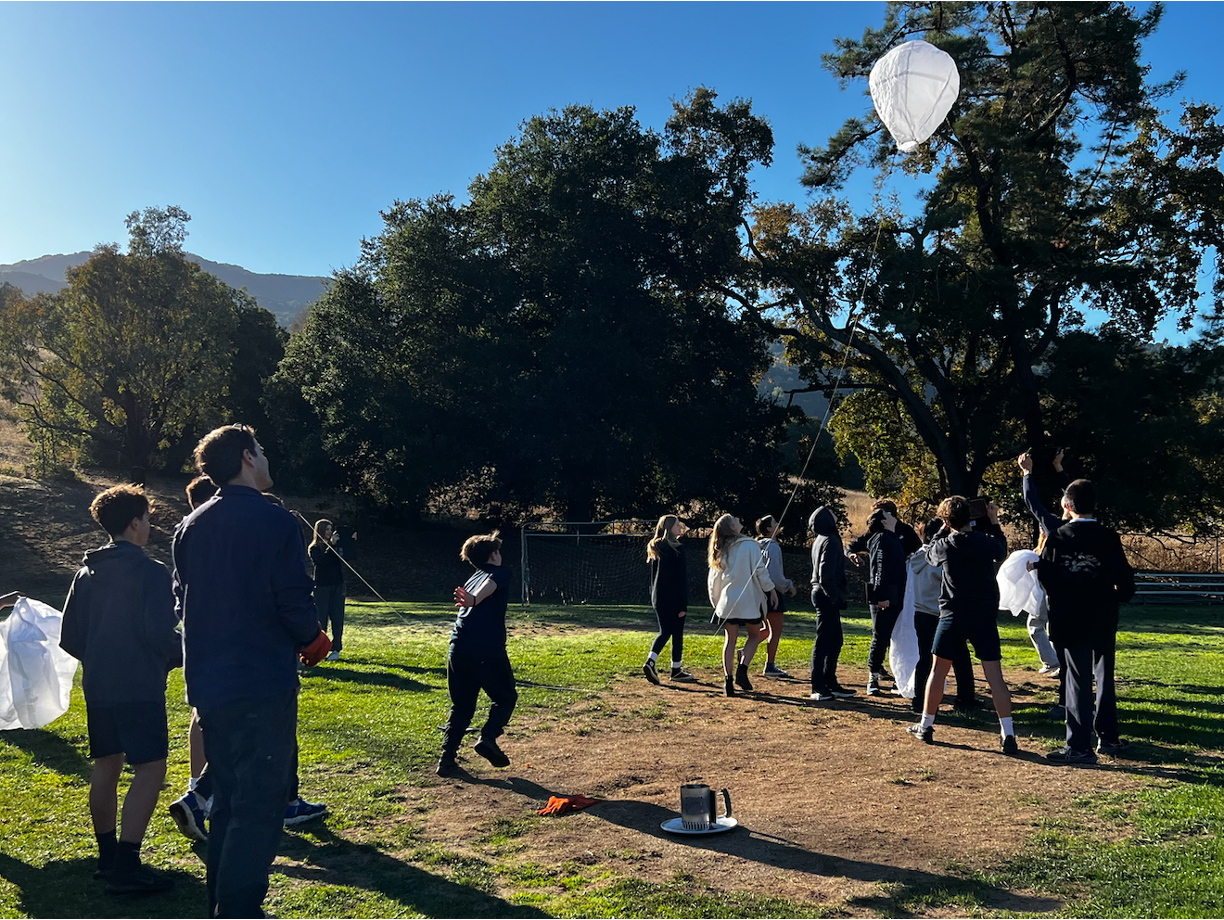“I think the bigger ones will float better because they displace more fluid, which is the air. Also, I’ve seen very big balloons; they work, so that means maybe this will work. But these other ones that are smaller, I’ve never seen that.”
8th Grade Scientists are building scaled hot air balloons and designing variations on a buoyancy experiment that they will write up and analyze using their own data. Starting with a pattern from one balloon segment and all its measurements, student groups were each assigned a scale relative to the original (.25x, .5x, .75x, 1.25x, 1.5x etc) to calculate dimensions for, build the new pattern, and then make several panels to assemble into a scaled up or down version of the original balloon. As they build in class, they read about buoyancy and hypothesize as well. The independent variable will be the scale size of the balloons, their dependent variable, and so their experimental question, is up to each individual.
Some students plan to measure the max height of each test flight, or the time it takes to float off the launch area, or the total air time. “My prediction is that it will fly the same amount of time and total height but carry less weight.”
Or, “My hypothesis is that each will fly, but less, like for less total time before it falls.”
Others are hoping to make a change to the independent variable, like, “I want to see if the hotter ones fly longer. I think they will because the hotter the air inside, that’s actually what makes it less dense. So then it should be more buoyant. But I can’t think how to measure the temperature very well.”
I want to see if the hotter ones fly longer. I think they will because the hotter the air inside, that’s actually what makes it less dense.
Others are wrestling with how the scaling up of the balloon affects both its total weight and its volume. “I’m not sure yet my hypothesis, because of course the bigger balloons have more hot air to lift them, but then they are also a lot heavier than the small ones just cause there’s much more paper. You can feel it.”
Monday each class will run the final tests for their experimental question. And in the coming weeks you can find a display in the front office authored by students about both what they discovered and how it is that balloons float in the first place. Through moments of authentic audience for their science writing, students hone their explanatory powers. Through designing their own experiment variations, they develop the well-rounded skills and content knowledge key for lifelong science learning and enjoyment.

